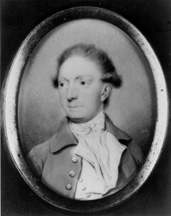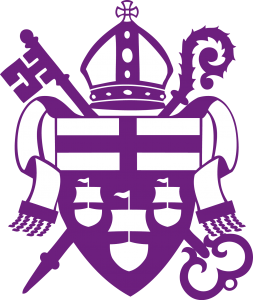
Truro Anglican Church is an Anglican church in Fairfax, Virginia, USA.

William Grayson was a planter, lawyer and statesman from Virginia. After leading a Virginia regiment in the Continental Army, Grayson served in the Virginia House of Delegates before becoming one of the first two U.S. Senators from Virginia, as well as a leader of the Anti-Federalist faction. Grayson became the first member of the United States Congress to die while holding office.
The Lorton and Occoquan Railroad (L&O) was a seven-mile railroad line running between the District of Columbia-operated Lorton Reformatory prison in Lorton, Virginia, and the wharf at Occoquan, Virginia, across the Occoquan River separating Fairfax County and Prince William County. The line operated from 1911 until it was decommissioned in 1977, and most of the rolling stock was sold in 1980. It was powered at various times by cable, steam, and diesel.
NOVA Parks is an inter-jurisdictional organization that owns and operates more than 10,000 acres of woodlands, streams, parks, trails, nature reserves, countryside and historic sites in Northern Virginia in the United States. The Authority was organized in 1959. NOVA Parks presently operates 34 regional parks.

Buildings, sites, districts, and objects in Virginia listed on the National Register of Historic Places:

The Diocese of Virginia is the second largest diocese of the Episcopal Church in the United States of America, encompassing 38 counties in the northern and central parts of the state of Virginia. The diocese was organized in 1785 and is one of the Episcopal Church's nine original dioceses, with origins in colonial Virginia. As of 2018, the diocese has 16 regions with 68,902 members and 180 congregations.

State Route 242 is a primary state highway in the U.S. state of Virginia. Known as Gunston Road, the state highway runs 3.58 miles (5.76 km) from U.S. Route 1 near Lorton east to SR 600 at the entrance to Gunston Hall, the plantation of George Mason, on Mason Neck in southeastern Fairfax County.

Christ Church is an Episcopal church located at 118 North Washington Street, with an entrance at 141 North Columbus Street, in Alexandria, Virginia. Constructed as the main church in the Church of England's Fairfax Parish, the building was designed by Col. James Wren, a descendant of Sir Christopher Wren.

Pohick Church, previously known as Pohick Episcopal Church, is an Episcopal church in the community of Lorton in Fairfax County, Virginia, United States. Often called the "Mother Church of Northern Virginia," the church is notable for its association with important figures in early Virginian history such as George Washington and George Mason, both of whom served on its vestry.

The Falls Church is an historic Episcopal church, from which the city of Falls Church, Virginia, near Washington, D.C., takes its name. Established in 1732, the parish in 1769 built a brick church building that remains in use today.

Little Hunting Creek is a 3.6-mile-long (5.8 km) primarily tidal tributary of the Potomac River located in Fairfax County, Virginia, not to be confused with Hunting Creek farther north. A stone-arch bridge, completed in 1931, carries traffic on the George Washington Memorial Parkway across the narrow mouth of the creek, located 96.6 miles (155.5 km) upriver from the mouth of the Potomac. The Washington family built its Mount Vernon plantation on the Potomac River along both banks of Little Hunting Creek during colonial times. The creek is bordered by residential communities in addition to the Mount Vernon property. It is a popular location for recreational fishing, and much of the wildlife characteristic of the tidal Potomac wetlands can be spotted there.

The Northern Neck Proprietary – also called the Northern Neck land grant, Fairfax Proprietary, or Fairfax Grant – was a land grant first contrived by the exiled English King Charles II in 1649 and encompassing all the lands bounded by the Potomac and Rappahannock Rivers in colonial Virginia. This constituted up to 5,000,000 acres (20,000 km2) of Virginia's Northern Neck and a vast area northwest of it.

William Fairfax (1691–1757) was a political appointee of the British Crown in several colonies as well as a planter and politician in the Colony of Virginia. Fairfax served as Collector of Customs in Barbados, Chief Justice and governor of the Bahamas; and Customs agent in Marblehead, Massachusetts, before being reassigned to the Colony of Virginia.

The Falls Church Anglican is an Anglican parish in the Falls Church section of Fairfax County, Virginia, near Washington, D.C. In 2006, the congregation of The Falls Church divided over the question of whether to leave the Episcopal Church, effectively creating two congregations: The Falls Church Anglican and The Falls Church.
Fairfax Parish was the ecclesiastical jurisdiction of the Anglican church in colonial Virginia with jurisdiction over part of Fairfax County with its central church located at The Falls Church. The parish was created in 1764 from Truro Parish.
Cameron Parish was the ecclesiastical jurisdiction of the Anglican church in colonial Virginia with jurisdiction over the western part of Fairfax County and, once it was created in 1757, over Loudoun County. The parish was named for the minor title of Thomas, Lord Fairfax, Baron of Cameron. The parish was created in 1748 from Truro Parish. It was divided in 1770 and Shelburne Parish was formed from the western half of Loudoun County. After 1770, Cameron Parish covered eastern Loudoun County until disestablishment ended the parish system by 1786.
William Payne was a Virginia gentleman, vestryman, justice, and Fairfax County sheriff in the late colonial period. He was a supporter of the American Independence movement and a member of the Fairfax County Committee for Safety. In 1755, he had a physical altercation with George Washington over an election issue for the Virginia House of Burgesses which almost resulted in a duel. The two became friends serving together in a number of roles later in life. His eldest son was a pallbearer at Washington’s funeral.
Linton Neck also known as Burbage's Neck is a peninsula in eastern Prince William County, Virginia bounded by the Occoquan River, Occoquan Bay, and Neabsco Creek. It is named after the prominent Linton family of the colonial era. Historically farmlands, today the plantation is home to a number of communities including: Featherstone, Woodbridge, Marumsco, and Neabsco. Near the fall line of the Occoquan River at the very North of Linton Neck is the incorporated town of Occoquan, Virginia. At the very south of Linton Neck is the historic site of Rippon Lodge.
Martin Scarlett or Scarlet, was a Virginia planter and military officer who served in the House of Burgesses representing Stafford County, as well as in local offices, including Justice of the Peace in 1680. Scarlett had emigrated from England and stated in a 1691 court that he had lived in Stafford County for more than 30 years, which record survived because the case had been appealed to the General Court in Williamsburg.
James Wren was an American politician, judge, military officer, architect, and merchant. Historians regard Wren as one of colonial Virginia's only architects of record.












